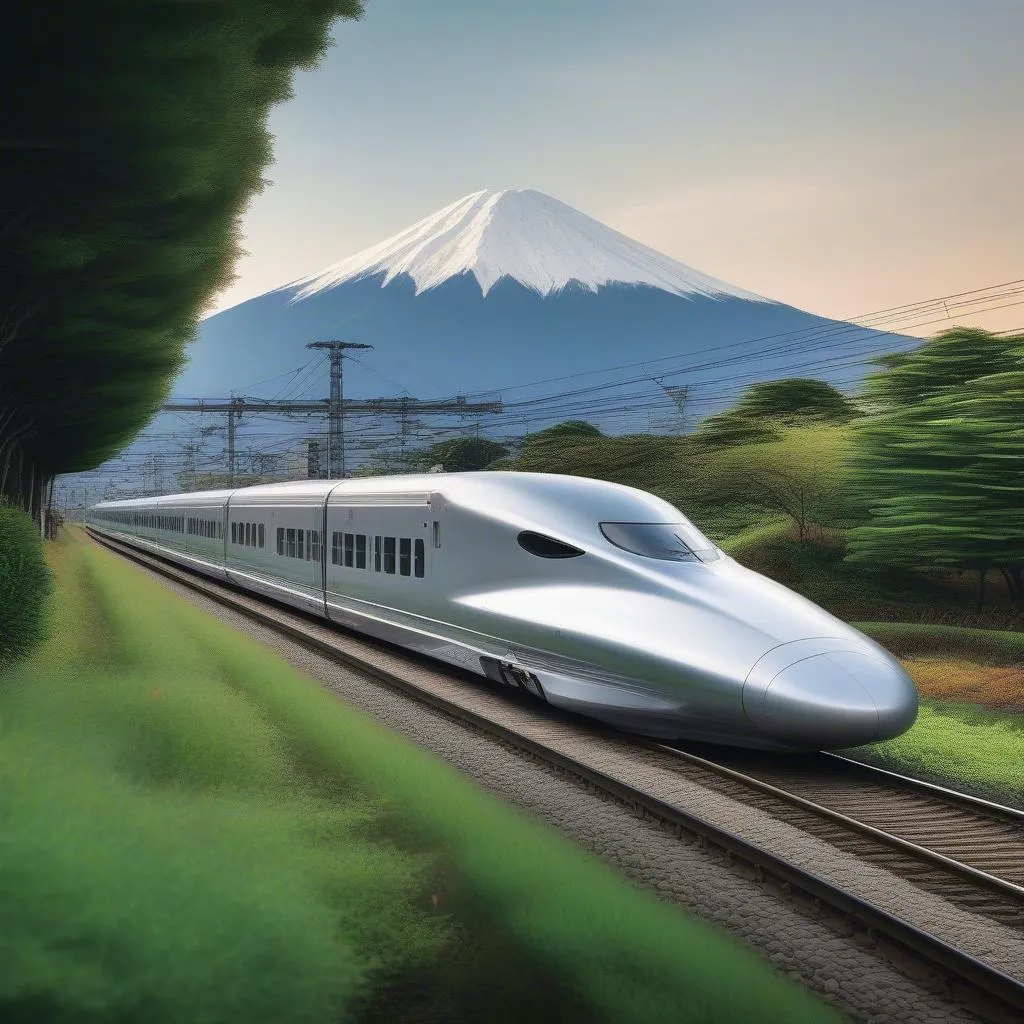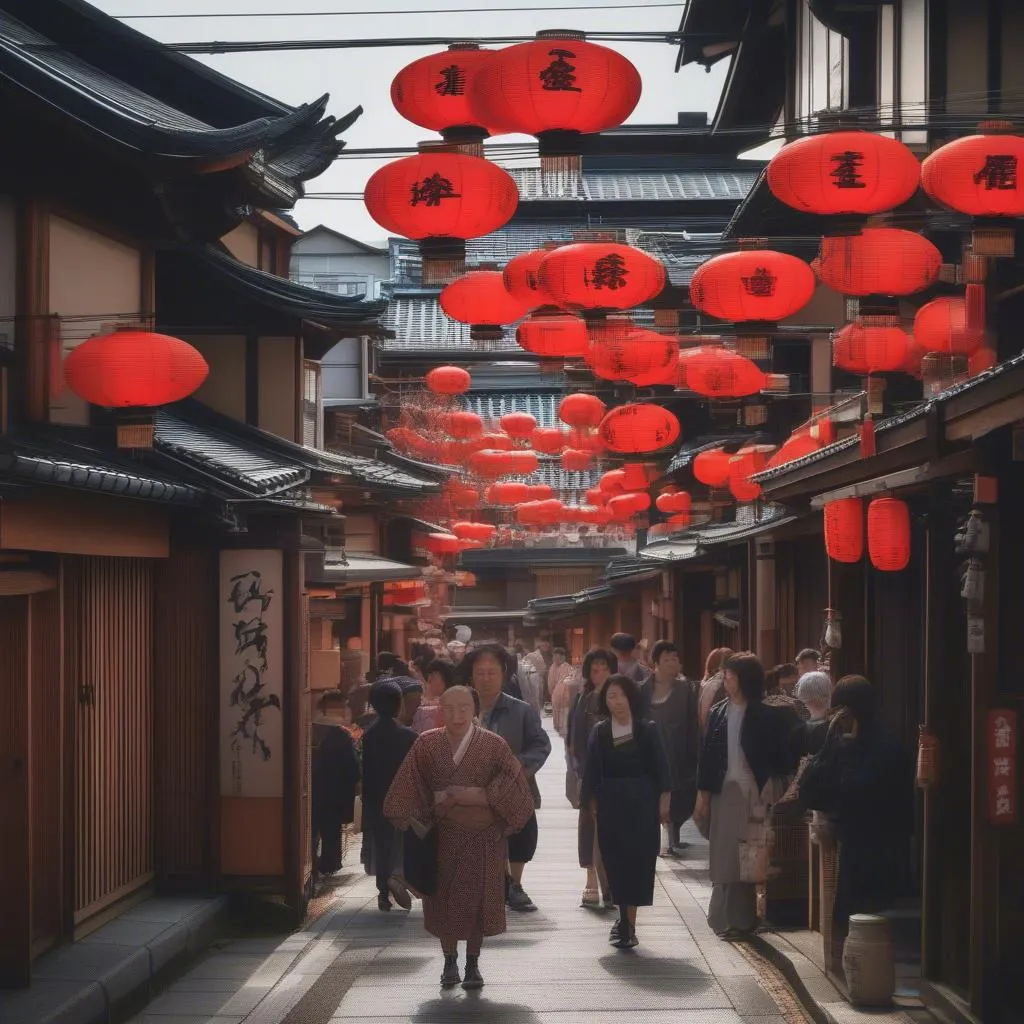Planning a trip to Japan and wondering how to get from the bustling metropolis of Tokyo to the cultural heart of Kyoto? You’re not alone! This is a common question for travelers, and luckily, there are several comfortable and efficient options to choose from. Whether you prioritize speed, budget, or scenic views, this guide will equip you with all the information you need to make your journey from Tokyo to Kyoto a breeze.
Choosing the Best Transportation for You
Each travel option offers its own unique advantages, so let’s break them down to find the perfect fit for your itinerary and travel style.
1. The Bullet Train: Shinkansen (新幹線)
The Shinkansen, Japan’s renowned bullet train, is arguably the most popular way to travel between Tokyo and Kyoto. And for good reason!
Speed and Efficiency: The Shinkansen can reach speeds of up to 320 km/h (200 mph), making it incredibly fast. The journey takes approximately 2 hours and 20 minutes on the Nozomi service, whisking you between these iconic cities in the blink of an eye.
Comfort and Convenience: Inside the Shinkansen, you’ll find spacious seats, large windows offering breathtaking views, and a peaceful ambiance. There’s even a snack cart and onboard restrooms for added comfort during your journey.
Cost: A one-way ticket on the Nozomi will set you back around 13,000-14,000 yen (approximately $90-$100 USD) for an unreserved seat.
Pro Tip: While the Nozomi is the fastest option, it’s not covered by the Japan Rail Pass. If you’re traveling on a JR Pass, opt for the Hikari or Kodama services, which take slightly longer but offer a more budget-friendly way to experience the magic of the Shinkansen.
2. The Budget-Friendly Option: Highway Buses
Traveling on a shoestring budget? Highway buses offer an incredibly affordable way to get from Tokyo to Kyoto.
Cost: Bus fares can be as low as 4,000 yen ($30 USD) each way, making it a significantly cheaper alternative to the Shinkansen.
Overnight Options: Many bus companies offer overnight services, allowing you to save on accommodation costs and maximize your sightseeing time.
Comfort: While not as spacious as the Shinkansen, modern highway buses are generally comfortable, often featuring reclining seats, footrests, and onboard restrooms.
Duration: The bus journey typically takes around 6-8 hours, depending on traffic and the specific route.
Insider Tip: Consider booking a night bus to make the most of your time and wake up in Kyoto, ready to explore!
3. Embrace the Journey: Domestic Flights
While not the most common choice, flying from Tokyo to Kyoto is an option, especially if you’re short on time or prefer air travel.
Duration: Flights take around 1 hour and 15 minutes. However, keep in mind that you’ll need to factor in travel time to and from the airports.
Cost: Flight prices vary depending on the airline and time of year but generally range from 5,000 to 15,000 yen ($35-$110 USD) each way.
Airports: Flights depart from Tokyo’s Haneda Airport (HND) and arrive at Osaka International Airport (ITM), which is closer to Kyoto than Osaka city center.
 japan-bullet-train
japan-bullet-train
4. A Scenic Adventure: Renting a Car
For the ultimate road trip experience, renting a car in Japan and driving from Tokyo to Kyoto allows you to explore the country at your own pace.
Flexibility and Freedom: Stop at charming towns, discover hidden gems, and create your own adventure along the way.
Scenic Routes: Japan boasts stunning landscapes, and driving gives you the freedom to soak it all in.
Navigation: Japan has an excellent road system, and English GPS navigation is readily available.
Things to Consider: Driving in Japan can be expensive, especially with tolls. You’ll also need an International Driving Permit.
Planning Your Journey: FAQs
How far in advance should I book my transportation?
For the Shinkansen, especially during peak season, booking in advance is recommended. You can purchase tickets online or at JR stations. Buses and flights generally have more availability, but booking ahead is always a good idea.
What are the best times to travel to Kyoto?
Spring (March-May) and autumn (September-November) are considered the best times to visit Kyoto, with pleasant weather and stunning scenery. However, these are also peak seasons, so expect larger crowds.
Can I use my Japan Rail Pass for all transportation options?
The Japan Rail Pass covers the Shinkansen (except for the Nozomi and Mizuho services), JR lines, and some local buses. It does not cover highway buses or domestic flights.
Embracing the Journey: A Traveler’s Tale
As a seasoned traveler and a firm believer in the philosophy of Feng Shui, I vividly recall my first journey from Tokyo to Kyoto. I chose the Shinkansen, drawn to its reputation for speed and efficiency. As the sleek train glided through the countryside, I felt a sense of balance and harmony, as if the journey itself were aligning my energies with the heart of Japan. The scenery transformed from bustling cityscapes to serene rice paddies and snow-capped mountains, a visual reminder of the constant interplay between yin and yang, the dynamic forces that shape our world.
 japan-street
japan-street